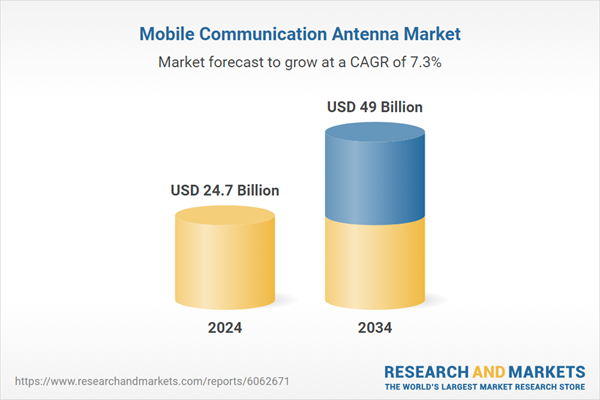Governments and telecom operators worldwide are investing heavily in 5G deployments, upgrading existing network infrastructure, and focusing on developing next-generation technologies like 6G, driving continuous innovations in antenna designs. The growing emphasis on improving network efficiency and reducing energy consumption is leading to the adoption of energy-efficient antenna systems that provide seamless coverage and enhanced connectivity in urban and rural regions. Furthermore, the rise of smart city initiatives and the increasing use of connected devices, including smart home systems and industrial automation, are contributing to the ongoing expansion of the mobile communication antenna market.
The market is categorized by frequency, with the below 6 GHz segment holding a 50% share in 2024. This frequency range plays a crucial role in supporting 4G LTE and the initial phases of 5G deployments. Frequencies below 6 GHz provide strong coverage, excellent indoor penetration, and reliable connectivity, making them ideal for nationwide mobile networks. As mobile operators work to ensure uninterrupted service and optimize performance across diverse regions, the demand for these frequencies continues to grow. The development of hybrid networks that integrate below 6 GHz and millimeter-wave frequencies ensures seamless connectivity, further driving market expansion.
In terms of antenna types, the market is divided into omnidirectional and directional antennas, with the omnidirectional segment accounting for 58.8% of the market share in 2024. Omnidirectional antennas are widely used in telecom infrastructure, particularly in base stations and macro cells, due to their ability to provide 360°-degree coverage. The growing deployment of mobile networks, IoT applications, and smart devices is driving the adoption of omnidirectional antennas. Technological advancements in multi-band and energy-efficient antenna designs are enhancing network performance while minimizing power consumption, further boosting demand for these antennas.
The Asia Pacific mobile communication antenna market held 35% of the global share in 2024, with China projected to generate USD 10 billion by 2034. China’s leadership in the market is driven by its aggressive rollout of 5G technology, substantial investments in telecom infrastructure, and strong government support for digitalization initiatives. The country’s push to accelerate 5G deployment and advance innovations in 6G and AI technologies continues to fuel demand for advanced mobile communication antennas, solidifying its position as a major growth driver in the region.
Comprehensive Market Analysis and Forecast
- Industry trends, key growth drivers, challenges, future opportunities, and regulatory landscape
- Competitive landscape with Porter’s Five Forces and PESTEL analysis
- Market size, segmentation, and regional forecasts
- In-depth company profiles, business strategies, financial insights, and SWOT analysis
This product will be delivered within 2-4 business days.
Table of Contents
Companies Mentioned
The major companies profiled in this Mobile Communication Antenna market report include:- Alpha Wireless
- Amphenol Antenna Solutions
- Baylin Technologies
- Cobham Wireless
- CommScope
- Ericsson
- Huawei Technologies
- Infinite Electronics
- Laird Connectivity
- Molex
- Nokia
- PCTEL
- Qualcomm
- RFS (Radio Frequency Systems)
- Rohde & Schwarz
- Mobile Mark
- TAOGLAS
- TE Connectivity
- Tongyu Communication
- ZTE
Table Information
| Report Attribute | Details |
|---|---|
| No. of Pages | 175 |
| Published | March 2025 |
| Forecast Period | 2024 - 2034 |
| Estimated Market Value ( USD | $ 24.7 Billion |
| Forecasted Market Value ( USD | $ 49 Billion |
| Compound Annual Growth Rate | 7.3% |
| Regions Covered | Global |
| No. of Companies Mentioned | 21 |









